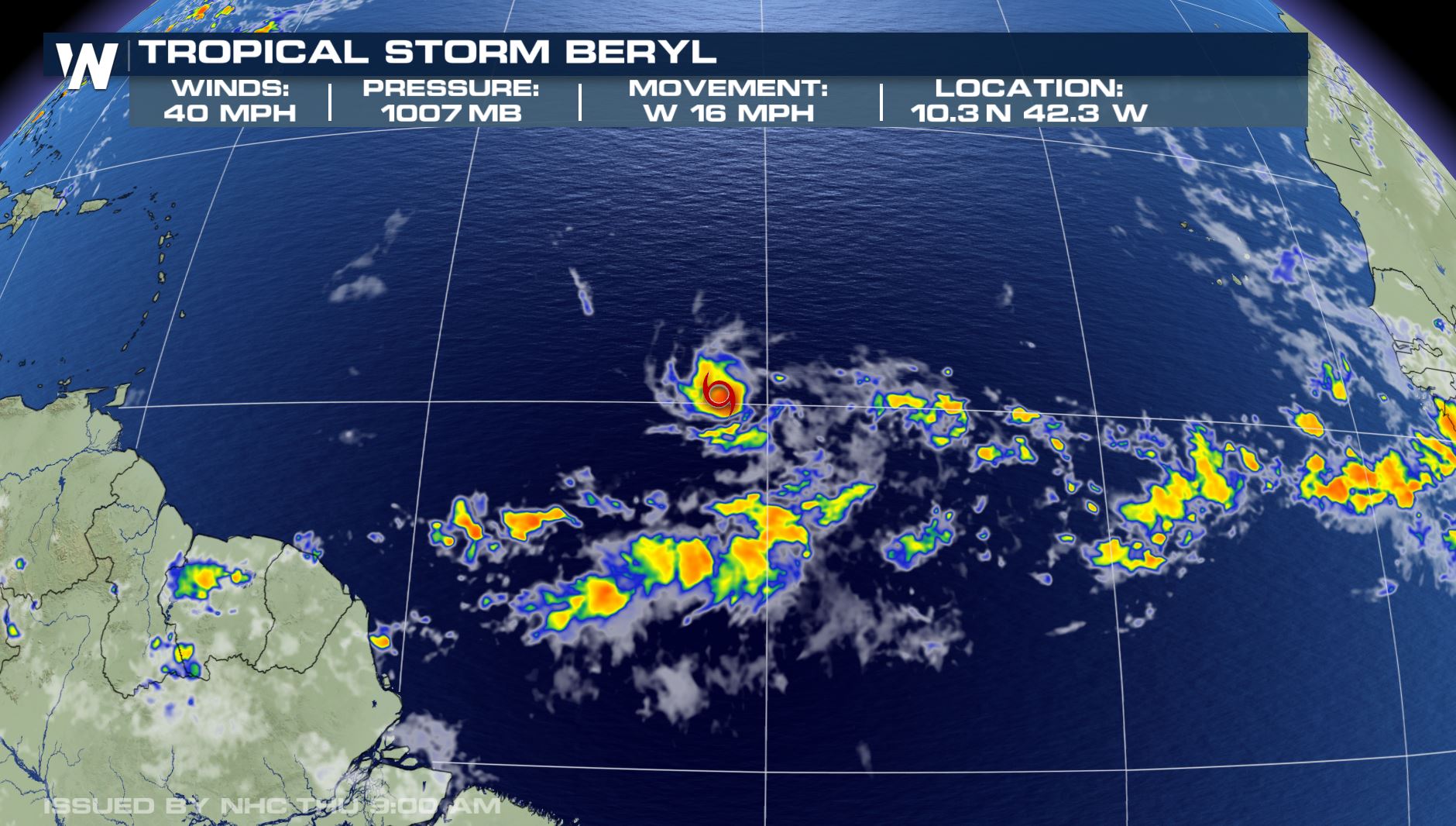Hurricane Beryl’s Path and Intensity

Hurricane beryl prediction – Hurricane Beryl is expected to continue on a north-northeasterly track, paralleling the east coast of the United States. The storm is forecast to weaken as it moves over cooler waters and encounters increasing wind shear.
Beryl, a hurricane, has been predicted to hit land soon. For more information about Hurricane Beryl, please visit the national hurricane center beryl website. This site provides detailed information on the hurricane’s path and intensity. Keep yourself updated on the latest developments and stay safe.
Potential Landfalls
Based on the current forecast track, Hurricane Beryl is not expected to make landfall on the U.S. mainland. However, the storm could bring heavy rain and gusty winds to coastal areas from Florida to North Carolina.
Hurricane Beryl expected to make landfall in the Caribbean. The storm is predicted to bring heavy rain and strong winds to the region. For more information on the impact of Hurricane Beryl in Barbados, visit barbados hurricane beryl. The hurricane is expected to continue moving west-northwest over the next few days.
Factors Influencing Intensity
The intensity of Hurricane Beryl will be influenced by several factors, including:
- Sea surface temperatures: Hurricane Beryl is currently moving over warm waters in the Atlantic Ocean, which is providing energy for the storm to develop and strengthen.
- Wind shear: Wind shear is the difference in wind speed and direction between different levels of the atmosphere. High wind shear can disrupt the structure of a hurricane and weaken it.
Impacts of Hurricane Beryl

Hurricane Beryl is predicted to bring significant impacts to coastal communities, including storm surge, flooding, and wind damage. Vulnerable populations and infrastructure are at risk, and the hurricane may have severe economic and environmental consequences.
Storm surge, a rise in sea level accompanying a hurricane, can cause extensive flooding in coastal areas. Beryl’s storm surge is expected to reach several feet above normal tide levels, potentially inundating low-lying areas and causing significant damage to property and infrastructure.
Inland flooding is also a major concern, as heavy rainfall associated with Beryl can lead to overflowing rivers and streams. This flooding can damage homes and businesses, displace residents, and disrupt transportation and communication.
Wind Damage, Hurricane beryl prediction
Hurricane-force winds can cause widespread damage to buildings, power lines, and trees. Beryl’s winds are expected to reach sustained speeds of up to 100 miles per hour, with gusts even higher. This can result in downed trees and power lines, structural damage to buildings, and potential injuries or fatalities.
Vulnerable Populations
Certain populations are particularly vulnerable to the impacts of Hurricane Beryl. These include the elderly, young children, those with disabilities, and low-income communities. They may have difficulty evacuating or accessing necessary resources during and after the storm.
Economic and Environmental Consequences
Hurricane Beryl is likely to have significant economic and environmental consequences. Businesses may be forced to close, leading to lost revenue and job losses. The tourism industry, a major economic driver in coastal areas, could be severely impacted. Additionally, the hurricane can cause damage to natural ecosystems, such as wetlands and coral reefs, which provide important ecological services and economic benefits.
Mitigation and Preparedness Measures: Hurricane Beryl Prediction

Coastal communities facing the threat of Hurricane Beryl should take immediate steps to minimize the impacts and ensure the safety of their residents. By implementing proactive mitigation strategies and preparing adequately, individuals and businesses can reduce the risks associated with the hurricane.
This section provides essential guidance on mitigation and preparedness measures for coastal communities, individuals, and businesses.
Evacuation Plans
Coastal communities should develop comprehensive evacuation plans that Artikel clear procedures for residents to follow in the event of a hurricane threat. These plans should include:
- Designated evacuation routes and assembly points
- Transportation arrangements for those without access to private vehicles
- Special provisions for vulnerable populations, such as the elderly and disabled
- Public education and outreach campaigns to ensure residents are aware of the evacuation plan and its importance
Coastal Reinforcement
Coastal communities should invest in coastal reinforcement measures to protect their infrastructure and shorelines from hurricane impacts. These measures may include:
- Seawalls and breakwaters to reduce wave energy and protect against flooding
- Beach nourishment to replenish sand and strengthen natural barriers
- Dune restoration to create natural barriers against storm surges
- Living shorelines using vegetation and other natural materials to stabilize shorelines
Individual and Business Preparedness
Individuals and businesses in coastal communities should take the following steps to prepare for Hurricane Beryl:
- Secure loose outdoor items, such as furniture and garbage cans
- Board up windows and doors to prevent damage from wind and debris
- Create an emergency kit with essential supplies, including food, water, first aid, and medications
- Identify a safe place to shelter during the hurricane, such as an interior room on the lowest floor
- Develop a communication plan to stay informed about the hurricane and contact family members
Disaster Response Coordination
Effective disaster response requires coordination among government agencies and non-profit organizations. This includes:
- Establishing a clear chain of command and communication
- Coordinating resource allocation and distribution
- Providing timely and accurate information to the public
- Mobilizing volunteers and coordinating their efforts
- Conducting damage assessments and providing assistance to affected communities